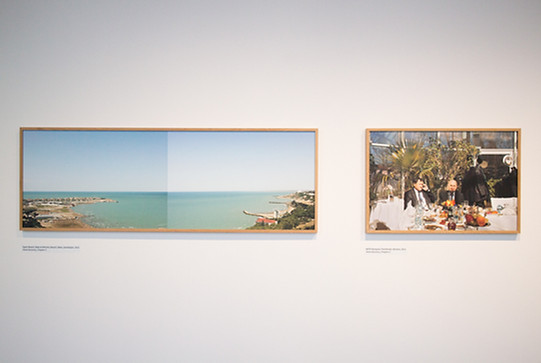maribastashevski at gmail.com
STATE BUSINESS
2010-



State Business explores the relationship between the state, companies, and media which not only sustains crises as the status quo, but produces new territories of sovereignty and aggressive mutation of warfare and forms of paranoia for the algorithmic age.
Ultimately, the work questions whether a non-participatory representation of conflict is at all possible and, if so, which kind of image will be resistant to auto-image consumption when disjointed from its broader context.
The photographic element of this work is situated in “space at the edge of the catastrophe” where an artist must find a reason to be, a space of non-event. A non-event that Francois Ewald Cooper identified as the catastrophe ever-approaching, one that provokes a perpetual fear of an unidentifiable threat without end, a space in which the conflict plays out as everyday business-as-usual.
Throughout this work I relied on photography as both a point in the trajectory of each chapter and a performative element, allowing the artist to enter the spaces of non-events.
Ironically, this makes the process behind the photographs in State Business non-photographic. The ubiquitous surfaces may look banal and innocuous but they are many degrees removed from the conflicts orchestrated inside them and, once identified, are summarily protected from an artist by red tape.
Locating and entering such spaces required filing Freedom of Information Act requests, extensive data and field research, and correspondence with various actors in multiple fields.
The obsessive inquiry in this case was not driven by a journalistic impulse for an exclusive insight into a previously unknown truth, but by a necessity to devise new methods by which we can understand, hack, and generate cracks in the culture of uninterrupted and automated production of war.
The work is broken into eight interconnected case studies. In each of the chapters I reconstruct a conflict narrative by tracing a trajectory of a specific transaction that I posit eventually resulted in very real causalities without a culprit.
Each chapter cuts through all established ideological notions of The Other, suggesting that The Other is usually engineered in service of the conflict economy.



